View in other NatureServe Network Field Guides
NatureServe
Montana
Utah
Wyoming
Idaho
Wisconsin
British Columbia
South Carolina
Yukon
California
New York
Barratt's Willow - Salix barrattiana
State Rank Reason (see State Rank above)
Rare in Montana. Known from two disjunct sites, one in Glacier National Park and one on the Beartooth Plateau. Populations are small, but the remote, high-elevation habitat should greatly minimize the potential for any negative impacts to the viability of the species in the state.
General Description
Barratt's Willow is a much-branched shrub that is up to 1 m tall. It has young twigs that are sticky and covered with long, soft hairs. The leaves have petioles that are 5-14 mm long and entire, elliptic or broadly lance-shaped blades that are 4-7 cm long. The blades are densely covered with long, gray hair beneath and thinly so above. The flowers are without petals and sepals and are borne in dense, spike-like inflorescences (aments or catkins); these are erect and sessile on twigs formed during the previous year. The male and female aments occur on separate plants. The seed capsules are hairy, and the bracts subtending them are black. The female aments are 4-9 cm long, while the male aments are 2-5 cm long.
Phenology
Mature fruit in July-August.
Diagnostic Characteristics
Species of willow are often difficult to identify. The alpine habitat, sessile catkins, and sticky twigs will usually distinguish S. barrattiana from the others in our area. Good specimens with both leaves and mature female catkins are necessary for positive identification.
Species Range
Montana Range
Range Descriptions
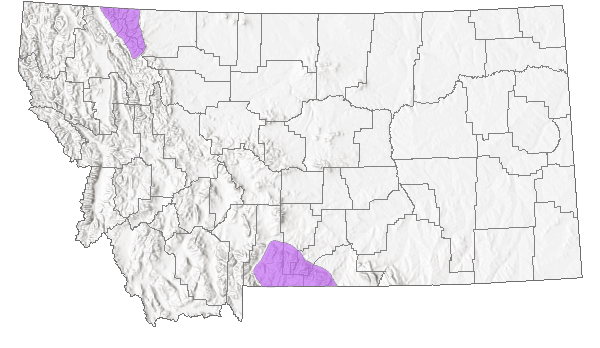
 Native
Native
Range Comments
AK and northwest Canada south to BC and northern MT; disjunct in the Beartooth Mountains along the MT-WY border.
Observations in Montana Natural Heritage Program Database
Number of Observations: 12
(Click on the following maps and charts to see full sized version)
Map Help and Descriptions
Relative Density

Recency
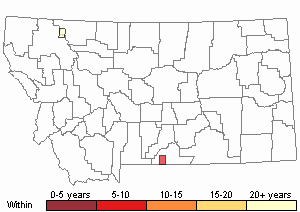
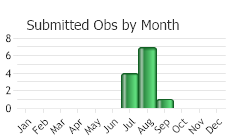
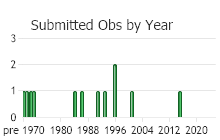
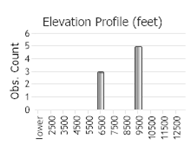 (Observations spanning multiple months or years are excluded from time charts)
(Observations spanning multiple months or years are excluded from time charts)
Habitat
Cold, moist soil in the alpine zone.
Ecological Systems Associated with this Species
Ecology
POLLINATORS The following animal species have been reported as pollinators of this plant species or its genus where their geographic ranges overlap:
Bombus vagans,
Bombus bifarius,
Bombus fervidus,
Bombus frigidus,
Bombus huntii,
Bombus melanopygus,
Bombus ternarius,
Bombus terricola,
Bombus sitkensis,
Bombus occidentalis,
Bombus pensylvanicus,
Bombus bimaculatus,
Bombus griseocollis,
Bombus impatiens, and
Bombus suckleyi (Plath 1934, Macior 1968, Heinrich 1976, Thorp et al. 1983, Colla and Dumesh 2010, Colla et al. 2011, Koch et al. 2012, Williams et al. 2014).
Stewardship Responsibility
Threats or Limiting Factors
STATE THREAT SCORE REASON
Threat impact not assigned because threats are not known (MTNHP Threat Assessment 2021).
References
- Literature Cited AboveLegend:
 View Online Publication
View Online Publication Colla, S., L. Richardson, and P. Williams. 2011. Bumble bees of the eastern United States. Washington, DC: USDA Forest Service, Pollinator Partnership. 103 p.
Colla, S., L. Richardson, and P. Williams. 2011. Bumble bees of the eastern United States. Washington, DC: USDA Forest Service, Pollinator Partnership. 103 p. Colla, S.R. and S. Dumesh. 2010. The bumble bees of southern Ontario: notes on natural history and distribution. Journal of the Entomological Society of Ontario 141:39-68.
Colla, S.R. and S. Dumesh. 2010. The bumble bees of southern Ontario: notes on natural history and distribution. Journal of the Entomological Society of Ontario 141:39-68. Koch, J., J. Strange, and P. Williams. 2012. Bumble bees of the western United States. Washington, DC: USDA Forest Service, Pollinator Partnership. 143 p.
Koch, J., J. Strange, and P. Williams. 2012. Bumble bees of the western United States. Washington, DC: USDA Forest Service, Pollinator Partnership. 143 p. Macior, L.M. 1968. Bombus (Hymenoptera, Apidae) queen foraging in relation to vernal pollination in Wisconsin. Ecology 49:20-25.
Macior, L.M. 1968. Bombus (Hymenoptera, Apidae) queen foraging in relation to vernal pollination in Wisconsin. Ecology 49:20-25. MTNHP Threat Assessment. 2021. State Threat Score Assignment and Assessment of Reported Threats from 2006 to 2021 for State-listed Vascular Plants. Botany Program, Montana Natural Heritage Program, Helena, Montana.
MTNHP Threat Assessment. 2021. State Threat Score Assignment and Assessment of Reported Threats from 2006 to 2021 for State-listed Vascular Plants. Botany Program, Montana Natural Heritage Program, Helena, Montana. Plath, O.E. 1934. Bumblebees and their ways. New York, NY: Macmillan Company. 201 p.
Plath, O.E. 1934. Bumblebees and their ways. New York, NY: Macmillan Company. 201 p. Thorp, R.W., D.S. Horning, and L.L. Dunning. 1983. Bumble bees and cuckoo bumble bees of California (Hymenoptera: Apidae). Bulletin of the California Insect Survey 23:1-79.
Thorp, R.W., D.S. Horning, and L.L. Dunning. 1983. Bumble bees and cuckoo bumble bees of California (Hymenoptera: Apidae). Bulletin of the California Insect Survey 23:1-79. Williams, P., R. Thorp, L. Richardson, and S. Colla. 2014. Bumble Bees of North America. Princeton, NJ: Princeton University Press. 208 p.
Williams, P., R. Thorp, L. Richardson, and S. Colla. 2014. Bumble Bees of North America. Princeton, NJ: Princeton University Press. 208 p.
- Additional ReferencesLegend:
 View Online Publication
View Online Publication
Do you know of a citation we're missing? Argus, G. 2010. Salix. In: Flora of North America Editorial Committee, eds. 1993+. Flora of North America North of Mexico. 16+ vols. New York and Oxford. Vol. 7.
Argus, G. 2010. Salix. In: Flora of North America Editorial Committee, eds. 1993+. Flora of North America North of Mexico. 16+ vols. New York and Oxford. Vol. 7. Dorn, R. D. 1970. The Willows of Montana. Montana State University Herbarium, Dept. of Botany and Microbiology, Bozeman, Montana. 18 pp.
Dorn, R. D. 1970. The Willows of Montana. Montana State University Herbarium, Dept. of Botany and Microbiology, Bozeman, Montana. 18 pp. Dorn, R.D. 2010. The genus Salix in North America north of Mexico. 59 pp.
Dorn, R.D. 2010. The genus Salix in North America north of Mexico. 59 pp. Fertig, W. and M. Bynum. 1994. Biological report on the proposed Twin Lakes Research Natural Area. Unpublished report to the Shoshone National Forest. Wyoming Natural Diversity Database, Laramie, Wyoming. 33 pp. plus appendices.
Fertig, W. and M. Bynum. 1994. Biological report on the proposed Twin Lakes Research Natural Area. Unpublished report to the Shoshone National Forest. Wyoming Natural Diversity Database, Laramie, Wyoming. 33 pp. plus appendices. Lesica, P. 1993. Vegetation and flora of the Line Creek Plateau area, Carbon County, Montana. Unpublished report to USDA Forest Service, Intermountain Research Station. Montana Natural Heritage Program, Helena, Montana. 30 pp.
Lesica, P. 1993. Vegetation and flora of the Line Creek Plateau area, Carbon County, Montana. Unpublished report to USDA Forest Service, Intermountain Research Station. Montana Natural Heritage Program, Helena, Montana. 30 pp. Lesica, P., M.T. Lavin, and P.F. Stickney. 2012. Manual of Montana Vascular Plants. Fort Worth, TX: BRIT Press. viii + 771 p.
Lesica, P., M.T. Lavin, and P.F. Stickney. 2012. Manual of Montana Vascular Plants. Fort Worth, TX: BRIT Press. viii + 771 p. Lesica, P., M.T. Lavin, and P.F. Stickney. 2022. Manual of Montana Vascular Plants, Second Edition. Fort Worth, TX: BRIT Press. viii + 779 p.
Lesica, P., M.T. Lavin, and P.F. Stickney. 2022. Manual of Montana Vascular Plants, Second Edition. Fort Worth, TX: BRIT Press. viii + 779 p.
- Web Search Engines for Articles on "Barratt's Willow"





